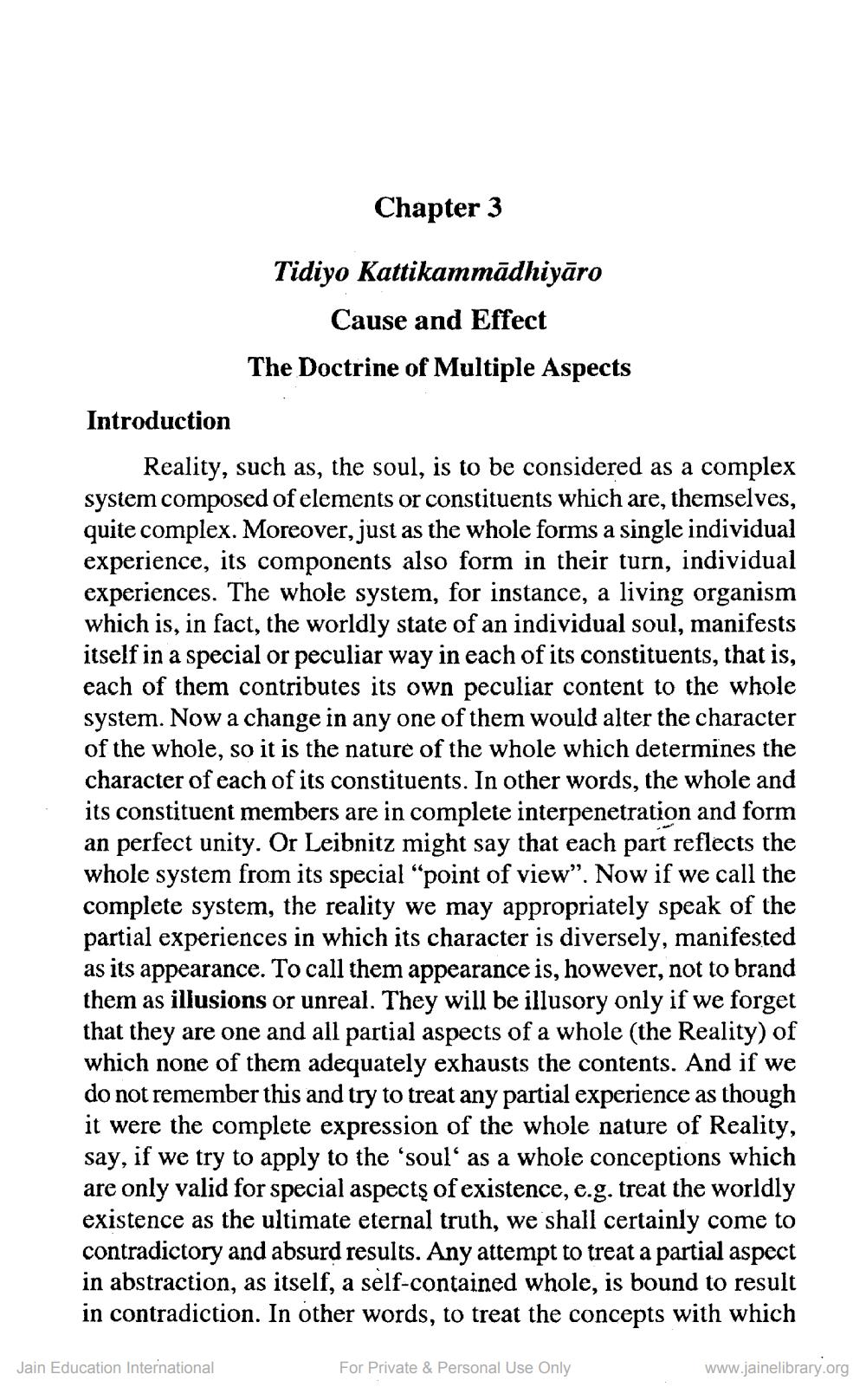________________
Chapter 3
Tidiyo Kattikammādhiyāro
Cause and Effect
The Doctrine of Multiple Aspects
Introduction
Reality, such as, the soul, is to be considered as a complex system composed of elements or constituents which are, themselves, quite complex. Moreover, just as the whole forms a single individual experience, its components also form in their turn, individual experiences. The whole system, for instance, a living organism which is, in fact, the worldly state of an individual soul, manifests itself in a special or peculiar way in each of its constituents, that is, each of them contributes its own peculiar content to the whole system. Now a change in any one of them would alter the character of the whole, so it is the nature of the whole which determines the character of each of its constituents. In other words, the whole and its constituent members are in complete interpenetration and form an perfect unity. Or Leibnitz might say that each part reflects the whole system from its special "point of view". Now if we call the complete system, the reality we may appropriately speak of the partial experiences in which its character is diversely, manifested as its appearance. To call them appearance is, however, not to brand them as illusions or unreal. They will be illusory only if we forget that they are one and all partial aspects of a whole (the Reality) of which none of them adequately exhausts the contents. And if we do not remember this and try to treat any partial experience as though it were the complete expression of the whole nature of Reality, say, if we try to apply to the 'soul' as a whole conceptions which are only valid for special aspects of existence, e.g. treat the worldly existence as the ultimate eternal truth, we shall certainly come to contradictory and absurd results. Any attempt to treat a partial aspect in abstraction, as itself, a self-contained whole, is bound to result in contradiction. In other words, to treat the concepts with which
Jain Education International
For Private & Personal Use Only
www.jainelibrary.org




